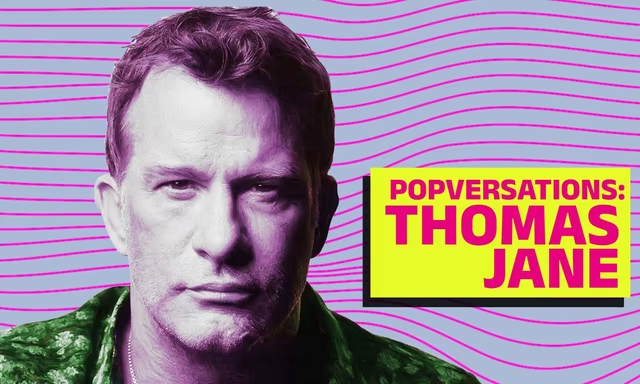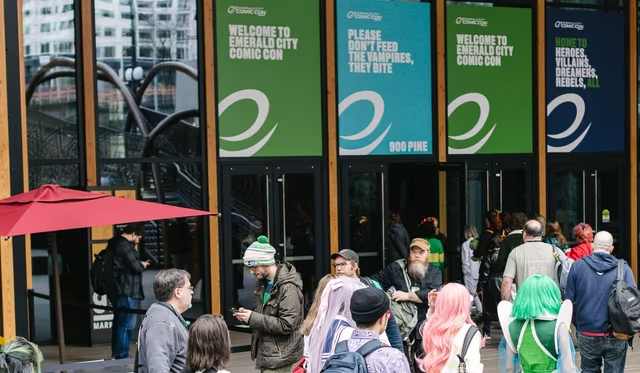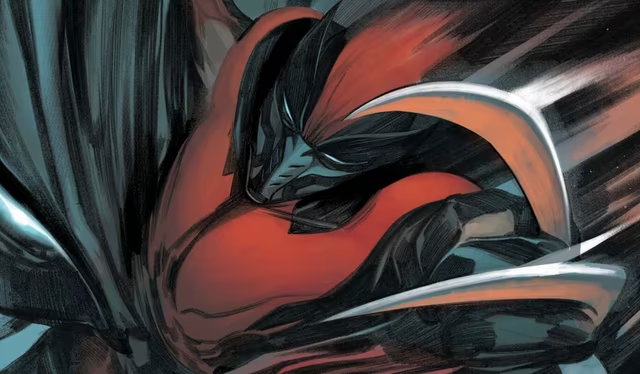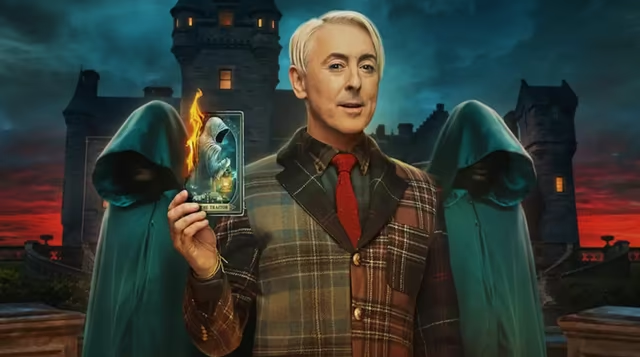If you click on a link and make a purchase we may receive a small commission. Read our editorial policy.
Is Marvel's Mystique trans? What we should learn from latest X-Men twist
Here's why everyone is talking about the revelation regarding Nightcrawler's origins.

Spoilers for X-Men Blue: Origins #1
The news is out: Nightcrawler’s origin is not what it seemed. In the panels of X-Men Blue: Origins #1 (written by Si Spurrier, penciled by Wilton Santos and Marcus To) it was revealed that Kurt Wagner’s biological parents are mutants Mystique (Raven Darkhölme) and Destiny (Irene Adler).
While some already decry the development as a retcon with an agenda, others had previously forseen that this revelation might soon be unveiled. The truth is that the revelation is actually a restoration of seminal (sorry) X-Men writer Chris Claremont’s intentions for the character. But continuity concerns aside, could the new beginning lead to further reclaimation for Marvel’s queer-coded heroes?
What relationship does Nightcrawler have with Mystique?
As fully recounted in Popverse's previous coverage on the issue, Nightcrawler’s parents had been previously believed to be Mystique and Azazel. An ancient mutant possessing a physical appearance and powerset reminicent of Nightcrawler, the narrative of Azazel as paternal parent was an easy story to believe (especially when gauged by the standard of intergenerational X-Men tales).
However, X-Men Blue: Origins #1 reveals that Azazel is not Nightcrawler’s father. Yet, Mystique remains in the equation. In the issue, Nightcrawler learns that Mystique impregnated Destiny, subsequently using her shapeshifting abilities to concurrently adopt the guise of pregnancy herself. This was necessary, since Mystique was posing as the pregnant wife of Baron Christian Wagner.
After Christian finds Mystique and the pregnant Destiny in bed together, he declares them “sapphist perverts.” Mystique tells Nightcrawler that this “made things easier in the end.” However, after dispatching Christian, Mystique continues adopting the apparently pregnant belly, in public and with Destiny in private.
Upon the child’s birth, Mystique presents as her true self as she and Destiny hold their baby, Nightcrawler. However, through their doctor, knowledge of Mystique’s mutant nature is passed to the nearby townspeople, who subsequently form a mob. While Mystique, Destiny and Nightcrawler all survive, complications see them separated.

When Mystique reunited with Destiny five years later, Destiny revealed that she had visions which guided her hand with regard to Nightcrawler. “She said you had to be raised, just so,” Mystique tells Nightcrawler in X-Men Blue: Origins #1. As such, the pair went to Professor Xavier, who used his abilities to rewrite their memories. However, after the psychic attack in Hellfire Gala 2023 #1, Mystique’s memories began to be recovered. This led to the conversation between Mystique and Nightcrawler in X-Men Blue: Origins #1, in which the pair recognized and embraced one another as parent and child.
Does X-Men Blue: Origins #1 retcon Nightcrawler’s origin?
Is it a retcon? In one sense, it is a restoration. Among X-Fans, it’s common knowledge that Claremont had intended for Mystique and Destiny to be revealed as Nightcrawler’s parents in the 1980s. However, rather than depicting the pair as a couple, he was instead forced to couch the intended relationship in euphemism.
For many years, queer-coding was necessary at Marvel. This was due to both the Comics Code Authority and an internal Marvel edict from contemporary editor in chief Jim Shooter, both of which forbade the depiction of queer people and relationships.
However, in the intervening years, Marvel Comics has gained the superpower of representation. In the process, some existing characters and relationships have been revisted and redefined. Sometimes this involves “true retcons,” which re-write existing continuity, but in other cases, it simply involves showing scenes that had been previously omitted from the narrative.

In the case of Mystique and Destiny, their relationship has been previously revisted in Marvel’s Voices: Pride #1 (2021), in the story “The Gray Ladies” (by Tini Howard, Samantha Dodge and Brittany Peer). Set circa 1900, the tale sees Mystique (and by extension, her lover, Destiny) engaging in a game of chess with a man who is suggested to be Professor James Moriarty. In other words, the story confirms that, even going back more than a century, for Mystique, Irene Adler was always the woman.
In X-Men Blue: Origins #1, this reclamation of Mystique, Destiny and by extension Nightcrawler’s story continues. While it doesn’t precisely rewrite the events that transpired, it does reveal that the accepted narrative is false. Nightcrawlers’ parents weren’t who we have been previously told that they are. In this sense, it is a retcon, especially since the creators behind the earlier stories most likely understood this false narrative to be the truth. However, because of the nature of Xavier’s abilites, the reason for the characters’ misapprehensions on the subject has an in-universe explanation that tracks with established continuity.
Does X-Men Blue: Origins #1 reveal Mystique is trans?

In X-Men Blue: Origins #1, it is confirmed that Mystique’s shapeshifting ability is more than just skin deep. As she explains (and as corroborated by an expositional memo by Doctor Nemesis), her shapeshifting ability runs all the way to the genetic level. She states that she has spent many years as “sapies males” — not just adopting the appearance, but actually controlling and changing “cells, hormones, ribosomes” and becoming the form down to the DNA.
As such, Mystique does have the ability to transcend gender. However, as discussed further below, her fantastic abilities make it hard to directly compare her phsyicality with any real-world person, trans or otherwise. For example, she also has the ablities to shape and form her body to her desire, well beyond what any human in our world can accomplish. As noted by Nightcrawler in Uncanny X-Men #4 (written by Spurrier with art by Lee Garbett), during which X-Men Blue: Origins #1 is set, Mystique can even create cavities within her body to conceal objects as large as a bazooka. So while Mystique can indeed manipulate her gender, the control she has over her body far exceeds what is possible for any human, including (but not limited to) transgender people who recieve gender affirming healthcare.
Shapeshifting being used for gender allegory in Marvel Comics is not unique to Mystique. Just one example is Xavin of the Runaways. A Skrull with shapeshifting abilities, Xavin presented as both female and male. When fellow Runaway Molly expresses discomfort with Xavin's alternating presentation in Runaways (Vol. 2) #22, Xavin argues that they are "not like everyone else, and that means [Molly] may need to learn to accept something new and different."
Both Mystique and Xavin play with gender presentation, which readers across a variety of demographics may find to be relatable. However, both do so through genre-defined shapeshifting powers.
As previously discussed in an analysis of whether Spider-Gwen is depicted as trans in Spider-Man: Across the Spider-Verse, superheroes like the Spider-Heroes and the X-Men can prove very relatable for trans fans, even the if the characters themselves aren’t explicitly trans. This is thanks to the fact that they deal with experiences that have real-life counterparts, like being unfairly judged, being compelled to live double lives, and finding strength in the very traits and abilities which might otherwise make you an outsider.
However, to say that these non-textually trans characters are trans is a misnomer. Instead, their gender must be understood through the genre-based traits from which their gender manipulation arises, which have no exact parallel on our plane of existence.
Furthermore, there are areas where the experiences of superhuman characters like Mystique and Xavin fall short of reflecting the experiences of real-life trans people. But for some trans readers, this may be because the shapeshifting abilities of these characters represent something of a fantasy fulfilled.
For those of us who experience gender dysphoria, the idea of being able to physically alter one's body at one's will has an undeniable allure. And while gender affirming healthcare can provide an avenue for the dissipation of dysphoria, recieving this treatment ranges from difficult to impossible (especially in the unfortunately growing number of states in which transphobic restrictions have been and are being implemented). Even in the best of situations, trans people often face inhumane gatekeeping from privileged cisgender individuals.
Finally, in spite of advancement and evolution in gender affirming healthcare strategies, no real-world person could hope to possess the fluid physicality of Mystique, Xavin, or many of Marvel's other shapeshifters. And while the idea of being able to wholly become various bodies down to the genetic level at various times could be appealing to many trans people for many reasons, with our present (and near-to-middle-distant) level of technology, it remains an unfathomable possiblity.
Where can trans rep in the X-Men go from here?

It is well known that the X-Men metaphorically stand-in for oppressed minorities. However, allegorical storytelling and explicit textual representation don’t always need to be mutually exclusive. Just one example is Escapade, aka Shelia Sexton, a trans woman who is a mutant. Escapade was co-created by Charlie Jane Anders, who recieves a “special thanks” in X-Men Blue: Origins #1’s issue credits.
Some may argue that allegorical representation is sufficeint, or that trans True Believers should be forced to look in less mainstream stories in order to see themselves reflected back through a narrative. But as Nimona creator ND Stevenson said at Thought Bubble, “‘representation matters’ sounds hollow when it’s coming from a corporation, but then you see what it means to people who finally see themselves.”
To this point, in the movie X2 (2003), Mystique (Rebecca Romijn) and Nightcrawler (Alan Cumming) share a memorable verbal exchange. “Then why not stay in disguise all the time? You know, look like everyone else,” asks Nightcrawler. “Because we shouldn’t have to,” replies Mystique. Likewise, trans people shouldn’t have to appear to be cis in order to find acceptance, in parental or in any other roles. Hopefully, the revelation of Nightcrawler’s true parentage will serve as a new beginning for the further expansion of trans represenation across the Marvel multiverse.
Read more on Popverse about the history of trans rep in the panels of Marvel Comics by clicking here.
An advanced review copy for X-Men Blue: Origins #1 was provided ahead of release by Marvel.
Follow Popverse for upcoming event coverage and news
Find out how we conduct our review by reading our review policy
Let Popverse be your tour guide through the wilderness of pop culture
Sign in and let us help you find your new favorite thing.
















Comments
Want to join the discussion? Please activate your account first.
Visit Reedpop ID if you need to resend the confirmation email.